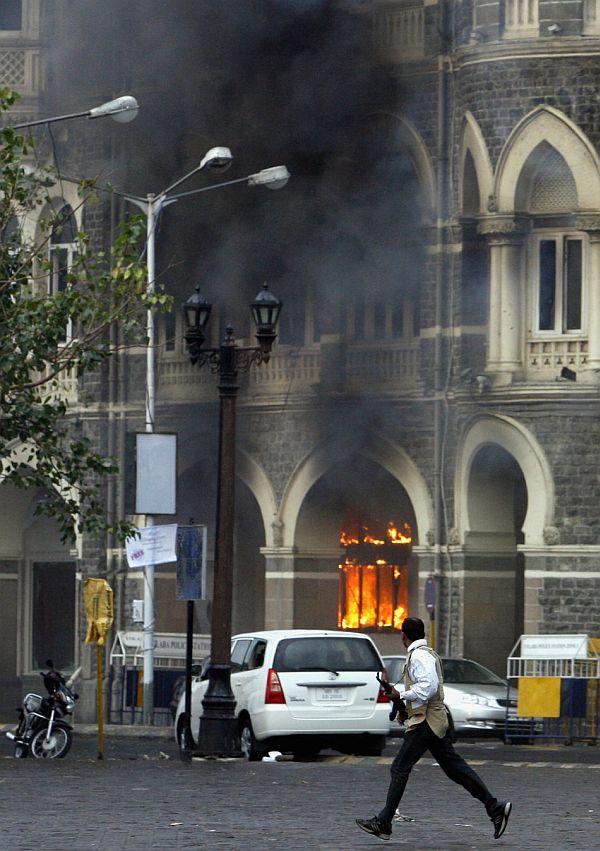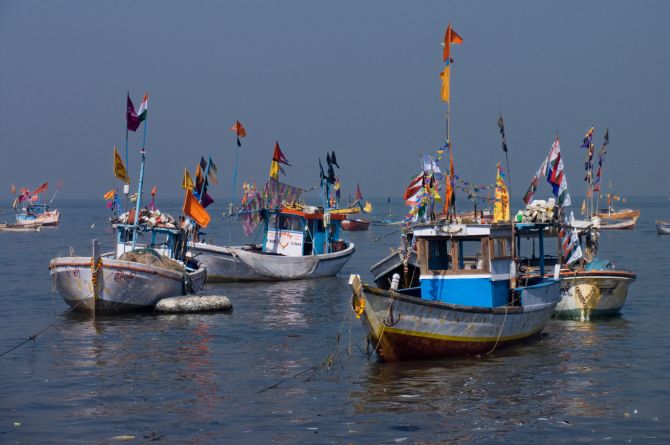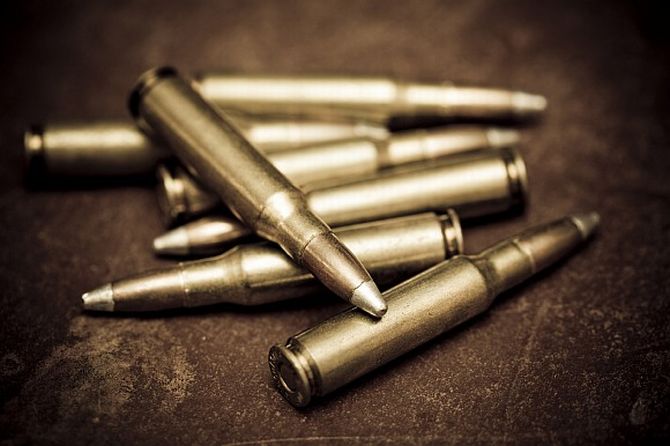 | « Back to article | Print this article |
The unresolved puzzles of the 26/11 attacks
The mysteries around the attacks on Mumbai swirl around even after five years. The most important is whether the 10 terrorists who carried out the attacks had local support, says Colonel (retd) Anil Athale.
The forthcoming publication of a book The Siege: The attack on the Taj and the fifth anniversary of the Mumbai attack has brought forth many newer insights on that event. As is to be expected the version of Adrian Levi and Cathy Scot-Clark that the Indians failed to act on American warnings has been contested by the Indian intelligence officials.
The authors make a point that though the Americans did give repeated warnings about the likely target and even method, they did not reveal the source.
This is unfair to the Americans as no intelligence agency ever reveals its source. But the authors have raised another serious issue -- the negligence of the Taj hotel management in ignoring and then dismantling the security that the Mumbai police had insisted on. The Taj management must be held accountable for this action that jeopardised the security of its clients.
The US attempt in preserving the ‘mole’ David Hadley (or Dawood Gilani) in order not jeopardise the operation to nab terror mastermind Osama bin Laden is understandable.
Click on NEXT to read further...
The unresolved puzzles of the 26/11 attacks
During the WW-II (Operation Bodyguard) in order to keep the secret of ‘Ultra’ (a machine that enabled the Allies to listen to the most secret German communications) Winston Churchill sacrificed Coventry and other British towns to German bombings.
Churchill was afraid that if Allies took extra precautions at those targets, about which he knew through ‘Ultra’, the Germans may well find out that their secret was compromised and may change the mode of communications.
Churchill was not prepared for this and so sacrificed British lives. In the circumstances the Americans did the second best by giving sufficient warnings; after all many Americans also died in that attack.
Vulnerability of the seas around Mumbai is a well known fact. In the early 1960s an American Daniel Walcott, had flown aircraft that dropped arms in the Murud-Janjira area. Wolcott was finally caught by the Bombay police in January, 1966. He had, a year earlier, brazenly flown off Palam airport to Pakistan!
In the 1970s, the west coast was a smugglers paradise -- when names like Haji Mastan and Karim Lala dominated the Mumbai underworld. There was very little fishing since smuggling was far more lucrative!
The smuggled goods ranging from tape recorders to cameras were openly sold in tiny shops on Sukhlaji Street in the Red Light area of Foras Road! Even the tonnes of RDX that was sent to India in 1993, was unloaded on beaches not far from Mumbai.
Given this past, it was a well known fact that Mumbai was vulnerable to infiltration of terrorists from sea.
Click on NEXT to read further...
The unresolved puzzles of the 26/11 attacks
But it stretches imagination too far to say that Headley was not noticed by Indian agencies. His frequent journeys from Karachi were bound to have raised a red flag! Given the volatile situation in Karachi, the only Americans who would transit this route would be either diplomats or spies.
Headley’s shady background and ostensible job as a ‘travel agent’ were a dead giveaway. Even a dysfunctional, Bollywood aspirant like Rahul Bhatt, whom he befriended, is reported to have joked about Headley being a spy. It is mind boggling that what Rahul Bhatt could sense the Indian intelligence did not!
The truth is David Headley was hiding ‘in plain sight’ in Mumbai. From the reports about his interview with Indian intelligence, he comes out as a typical Pakistani braggart! And what a spy -- with mismatched eyes that make sure that he sticks out in a crowd. It is most likely that the Indian authorities ‘knew’ about David Headley’s ‘real’ mission and decided to play him along for more or less the same reason that the Americans gave him a long rope!
His arrest by the Americans in October 2009 at Chicago, a full six months before the killing of Osama raises a question! What may well be the fact is that Headley’s usefulness ended even before the successful raid on Osama.
Headley was ‘outed’ in order to protect some others still in the Lashkar-e-Tayiba, which carried out the Mumbai attacks, and at a far higher level. Headley seems more like a pawn that was sacrificed to save the Queen!
Click on NEXT to read further...
The unresolved puzzles of the 26/11 attacks
The published details of Headley’s activities in Mumbai do not amount to much. In an era of the internet and Google Earth, with detailed street level maps and pictures freely available, an amateur taking a few photographs of sensitive installations amounts to very little. But it what may well be that Headley set up a local support cell for the 26/11 attacks.
But the ‘real’ issue of 26/11 that is shrouded in mystery is that of local support to this terrorist operation. The first issue is why did 10 men coming in a rubber dingy to the Machimar colony not make the residents suspicious? The dingy in which the terrorists landed is typically used by army or navy and not anyone else! On top of it, the men just tied the dingy and left... almost like leaving a car with ignition keys at a busy street corner!
The whole landing episode is shrouded in mystery. On top of it is a question as to how did complete strangers to Mumbai make their way to the designated targets, especially one like Chabad House, virtually unknown to most. It seems reasonable to conclude that the terrorists had a reception party waiting for them and local guides.
Even more crucial is the question as to how the terrorists holed in Taj hotel kept firing for nearly 60 hours! Given the fact that the AK-47 rifles they were armed with have a very high rate of fire, 400 rounds per minute, they must have fired thousands of rounds of ammunition! A rubber dingy is incapable of carrying that kind of weight and ten men!
The issue of local support could be easily resolved one way or the other. When the Taj was cleaned up after the attack, the police must have surely collected the fired cases... especially those with POF (Pakistan Ordnance Factory) markings.
Click on NEXT to read further...
The unresolved puzzles of the 26/11 attacks
Unfortunately over the years there is a political consensus over playing down or denying the involvement of ‘local’ elements in any terror incident.
This is done ostensibly to prevent a backlash against the minority community. India has come a long way since 1947.
Even the 7/11 Mumbai train bombings, much more ghastly than 26/11, saw no reaction against minority.
What this has done is that in a defensive reaction a sense of victimhood has been built up in the minority even over minor incidents!
An imbecile politician even had the gall to tell a foreign diplomat that it is majority communalism that is the greater threat! Internationally, this has given a handle to predator western states a handle to bash the majority community in India!
Colonel (retd) Anil Athale is coordinator for the Pune-based Initiative for Peace and Disarmament




